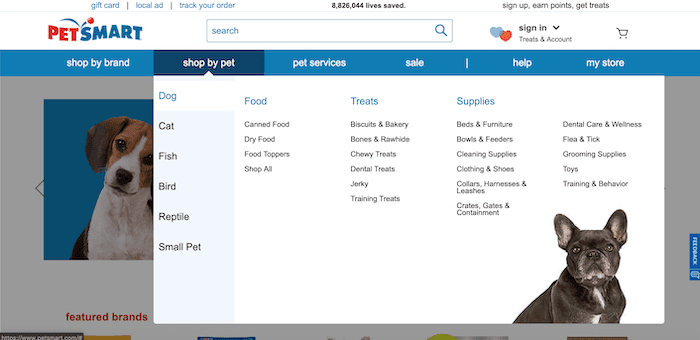E-Commerce is on a tear. Frost & Sullivan reports that annual B2B e-Commerce will reach $6.7 trillion by the year 2020. Meanwhile, eMarketer estimates that global e-Commerce will reach $25 trillion in 2019.
With so much to gain, e-Commerce businesses can’t afford to lose sales due to poor web site design. For most web sites, there are established best practices that can help you build a useful, functional site.
But e-Commerce web sites are unique. They need to manage inventory, process payments and provide a convenient shopping interface. And, they need to work harder to overcome the inherent uncertainties of the internet in order to inspire consumers to part with their hard-earned cash.
The bottom line is that e-Commerce sites need to play by a different set of rules than a typical web site. That’s because, as we pointed out in our complete guide on starting a business, 97% of consumers research their purchases online before buying.
So, if you run an e-Commerce business and want to fully realize its potential, focus on these important five web site design features.
1. Streamlined Navigation
If you walked into a cluttered store where shelves are overwhelmed with merchandise and no semblance of order, you’d probably leave. That’s not a pleasant shopping experience.
An e-Commerce site with poor navigation is the equivalent to a cluttered, messy store.
It’s not enough to have a great business name and sharp looking business logo and call it a day. If your homepage isn’t well designed and fails to offer a clear path to help shoppers find what they’re looking for, they will leave. And, while effective navigation design is an important factor for all web sites, it’s particularly important for e-Commerce sites that sell a wide variety of products.
So, let’s talk specifics…
Design tiered, common-sense menus
Image courtesy of PetSmart
Don’t throw everything and the kitchen sink on your homepage. Visitors may get overwhelmed and leave rather than forge through the chaos.
Instead, provide an organized, tiered structure with just a few main categories at the top (homepage) level to allow your visitors to discover your products easily. Consider using expanding drop-down menus to reveal more options once the customer has made their initial selection.
For instance, PetSmart allows users to shop by brand, pet, pet services or by sale items. These four categories provide gateways to detailed menus.
Filters make finding specific items easy
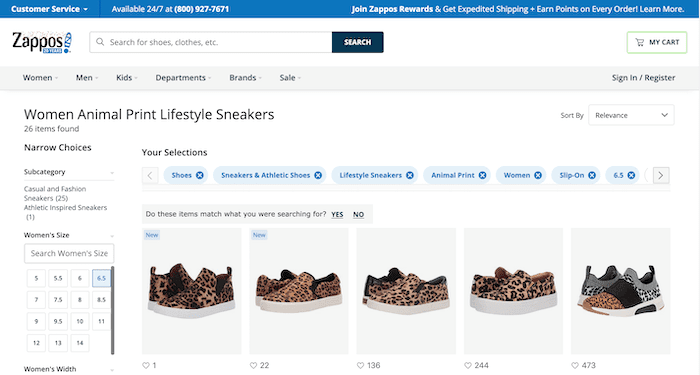
Image courtesy of Zappos
If you offer a particularly broad inventory, you may want to offer additional filters that will let people narrow their search to specific parameters.
For instance, most major shoe retailers allow you to filter by price, color, heel height, size and style. Furniture and home goods sites allow you to filter by price, width, height and color, among other factors.
Filters save users time and frustration by eliminating the need to scroll through dozens, if not hundreds, of inappropriate search results.
Embrace the search bar
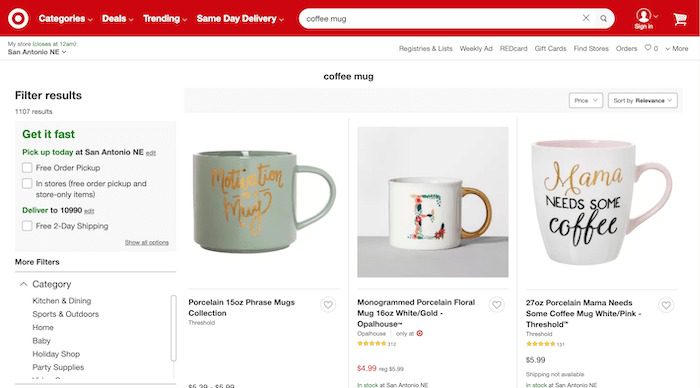
Image courtesy of Target
The king of shopping navigation tools is, of course, the almighty search bar.
Including a search bar on your homepage allows visitors to immediately begin a targeted search for the item or service they’re looking for.
There’s no tedious clicking through many layers of menus — you just enter your search criteria and away you go. Consumers value the ability to search for exactly what they’re looking for without having to beat around the bush.
2. Live Chat
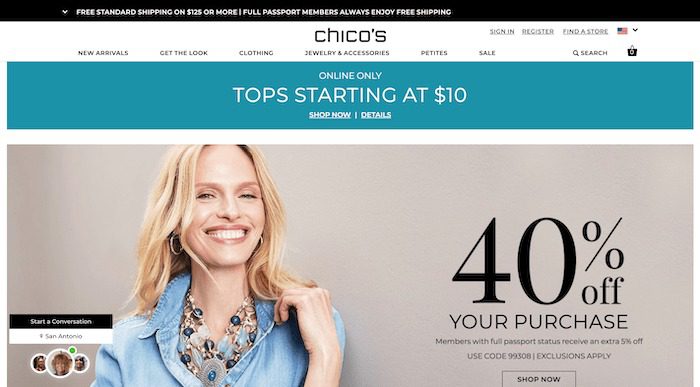
Image courtesy of Chico’s
We’ve all walked into a store and been greeted by a friendly employee. It’s Retail Etiquette 101.
Live chat can act as that friendly, discreet employee on your web site.
The impersonal nature of online retail raises concerns. “How do I know if this web site is a scam?” “Will they just take my money and I’ll never hear from them again?”
But live chat reassures consumers that there are real people who are happy to help on the other side of the screen. When a visitor has a question or technical issue that needs to be resolved before making a sale, the immediate assistance live chat can provide removes friction so the sale can proceed.
A study by customer support platform Zendesk reported that Live Chat provides the highest level of customer satisfaction. People don’t want to have to pick up a phone anymore — or wait for an email response — but they do value instant feedback.
So consider adding live chat support to your e-Commerce site. (But only add live chat if you have the support resources to cover it. It’s infuriating waiting for a live chat rep that never shows up.)
3. Strong Product Photography

Image courtesy of Crate & Barrel
Most people aren’t comfortable buying an item sight unseen. We work hard for our money. And, when we part with it, we want to be sure that we’re really getting what we want in return. That’s where e-Commerce sites struggle to compete with the brick and mortar shopping experience.
In a physical store, customers can pick items up, try clothing on and make instant side-by-side comparisons with other similar products. There’s no way to touch the items for sale online. The best way to overcome this deficit is by incorporating awesome photos into your e-Commerce site design.
Remember that product photos are part of your company’s brand identity — pick the best ones so that they reflect your unique identity.
Design your web site layout to feature product photos in a user-friendly way. The most popular options are photo grids or vertical lists. (Avoid photo carousels that take a long time to load and restrict easy viewing.)
As for the photos themselves, provide well-lit pictures of each item from every angle. Provide close-ups of important details. Most importantly, include pictures of the product in use so that users can envision that item in their own life.
We also recommend featuring photos of your real-life team. Seeing the real people with whom they’re doing business helps to reassure customers and build a sense of trust.
Chad Reid, Director of Communications and JotForm explains:
I’ve worked for a few different e-Commerce companies now, and each time we overhauled our About pages we saw an uptick in sales.
Transparency builds trust. Trust encourages sales. It’s that simple. Feature your team in a visible way.
4. Safe And Easy Checkout
Entering your credit card info online can be nerve-wracking. From low-level scam artists who just take your money and run, to sophisticated hackers and identity thieves… the Internet is a scary place.
Every e-Commerce business should strive to do all they can to provide a secure checkout process. If you’re not an expert in online retail security, this probably means using hosted checkout.
Hosted checkout services handle all of your secure transactions for you. There’s no need to reinvent the wheel. (Or, in this case, secure encryptions and sensitive data storage.)
The downside of hosted checkout is that you may be limited to their user interface — giving you less control.
On the plus side, familiarity breeds confidence when it comes to online shopping. A familiar-looking checkout page will likely work in your favor.
In addition to providing a secure checkout process behind the scenes, it’s in your best interest to let your customers know that their shopping experience will be a safe one. The easiest way to do this is with secure checkout badges.
If your hosted checkout provider has a badge, feature it prominently near any calls to action.
Investing in a secure user experience — and telling your customers about it — will inspire confidence and serve your e-Commerce business well.
5. Social Proof (Customer Reviews)
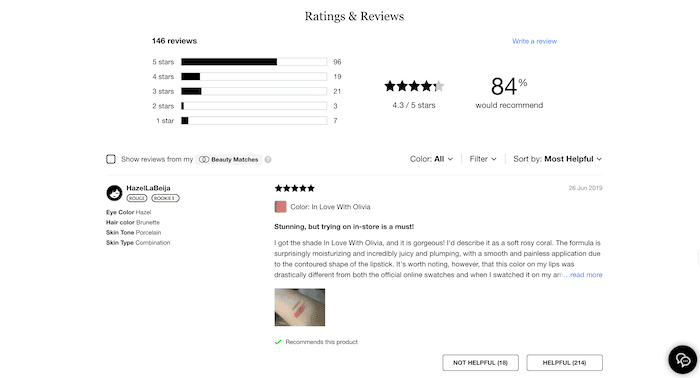
Image courtesy of Sephora
Today’s consumers rely on social proof when making online purchases. We don’t know the people running most online stores. We can’t touch the merchandise and online returns are often a hassle.
But reading reviews from other customers gives us a window into what the product is really like. Online reviews usually include the pros and cons. They may also share additional information about the item in the context of use.
A 2017 study from Spiegel Research Center shows that 95% of shoppers read online reviews before making a purchase. This is why you should be building a review platform right into your e-Commerce site.
Make it easy for visitors to find reviews from other users and leave reviews themselves. These reviews should be paired with the product being reviewed so that shoppers can learn more without leaving the product page. Social proof is essential to building comfort and confidence in online purchases. So integrate it into your e-Commerce site.
Katie Lundin is a Marketing and Branding Specialist at crowdspring, one of the world’s leading marketplaces for crowdsourced logo design, web design, graphic design, product design, and company naming services. She helps entrepreneurs, small businesses and agencies with branding, design and naming, and regularly writes about entrepreneurship, small business and design on crowdspring’s award-winning small business blog.



